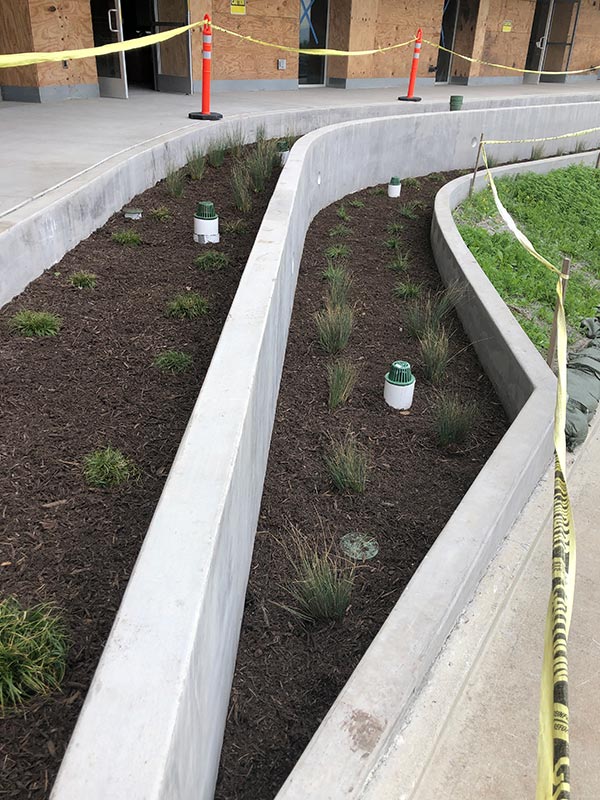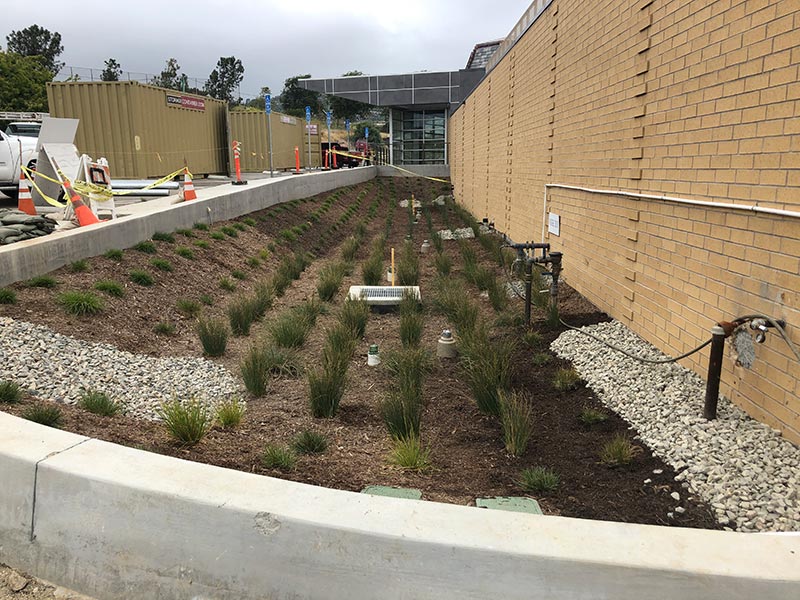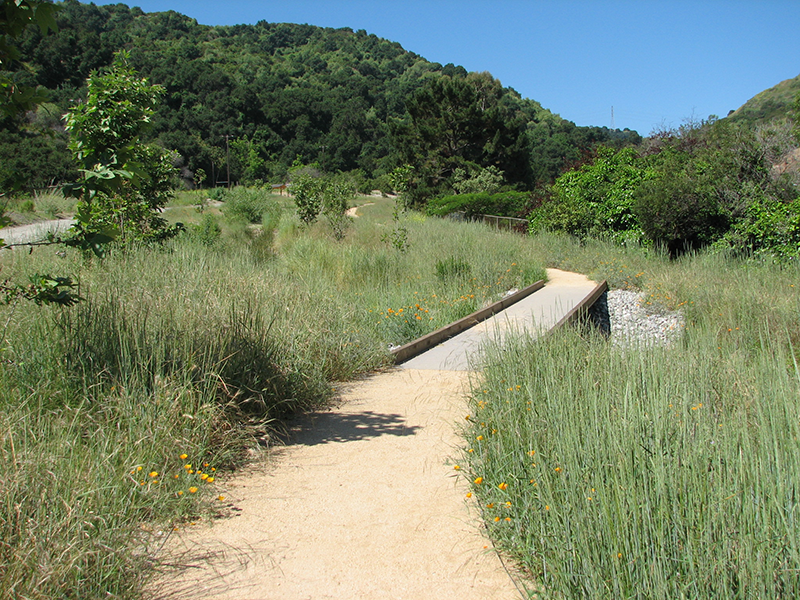
Big Planter Boxes
On August 14, 2020, the San Pedro (CA) Elks Lodge cut the ribbon on their reopening more than six years after being burned down in an arson fire. Since the project was a complete rebuild, the City of Los Angeles now required that storm water runoff from all hard surfaces be treated prior to being released from the site. The soil around the building allowed for infiltration meaning storm water can soak into the ground for natural cleansing through the alluvium, and the City of LA favor’s infiltration treatment. We took advantage and designed large planter boxes all around the new building. Using the site topography, the planter boxes even terraced down the hillside providing vast areas for planting and landscaping.
Out of Sight – Out of Mind
Water treatment is required on all new building projects, but some of these buildings are situated on sites where there is not the room for these big planter boxes or spreading grounds where storm water can soak into the ground during and after a rainwater event. We still need to accommodate pedestrian access and vehicular traffic (roads, parking lots, etc.). To not lose valuable real estate, we place water storage chambers underground where storm water can retained for slower release and to be allowed to soak into the ground at the site’s infiltration rates. In order to achieve the LEED points for the Los Angeles Harbor College Science Complex, we created 60,000 gallon of water storage system below the project hardscape. This solution also reduced runoff rates that increased due to the increase of site hardscape.


Nature Works Best
Steep trailheads leading up the Hacienda Hills end in a residential neighborhood where fast flowing, dirty storm water would never be acceptable. Since the trailhead is dirt and vegetation, it only makes sense to find ways to block flowing rainwater long enough to allow for localized percolation before it reaches the bottom of the park. As the trails meander up the hill, we had a dry streambed carved into the hill and where the trail crosses this streambed – gabion sluices were introduced to slow water down. Carefully selected, native vegetation is now getting a chance to clean up the dirty “first flush”.
If you have any comments or questions please contact David Marquez, Sales Account Manager at JMC² Civil + Structural Engineering at dmarquez@jmc-2.com, (310) 241-6550 x253, www.jmc-2.com.
